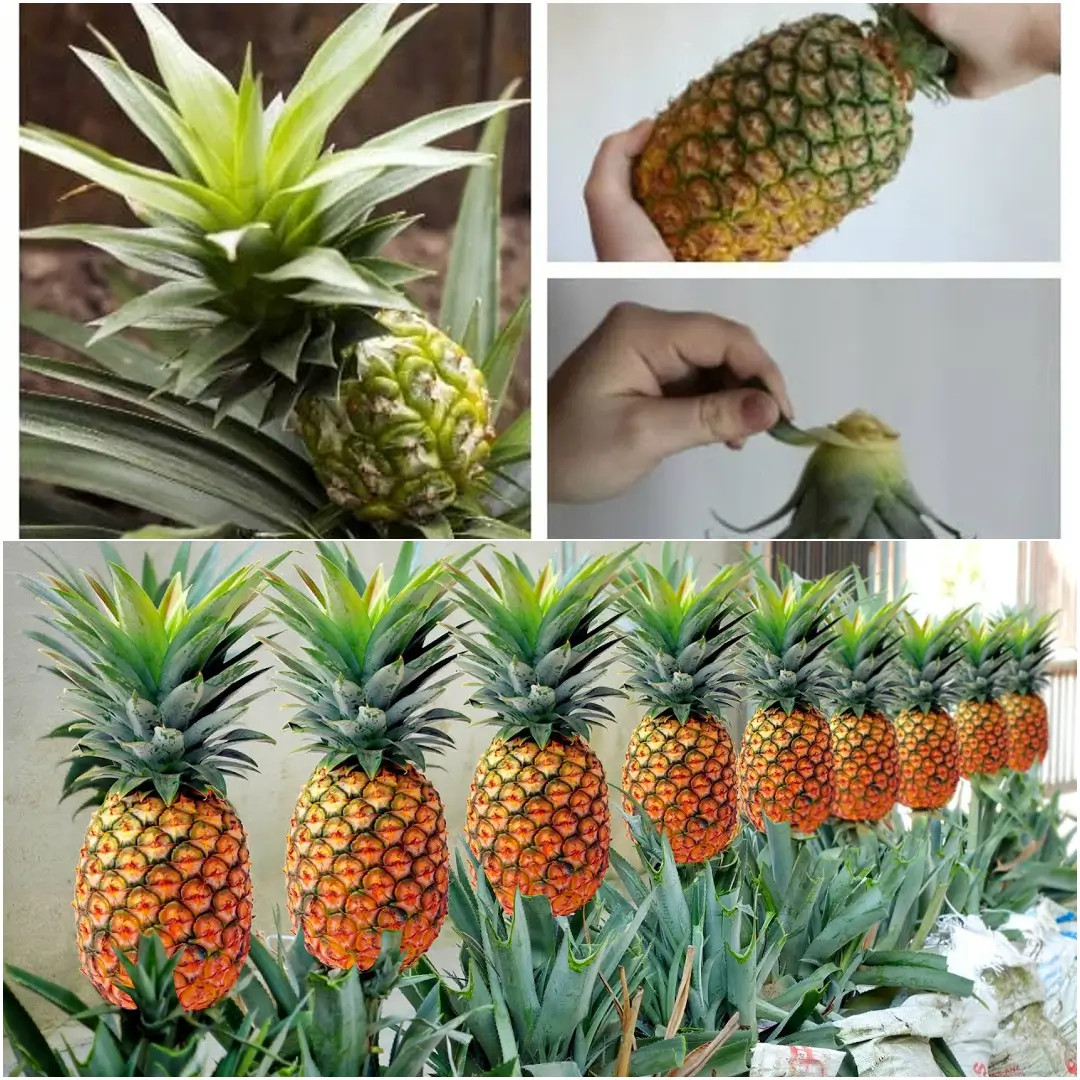Have you ever wanted to grow your very own pineapple at home? The good news is that growing pineapples indoors is not only possible but also easier than you might think. With the right care and conditions, you can have a thriving pineapple plant that adds a touch of the tropics to your home.
Growing Pineapple Indoors
Pineapples are a fun and rewarding plant to grow indoors, and you don’t need a tropical climate to make it happen! In this guide, I’ll walk you through everything you need to know about growing pineapples at home, step by step, with simple instructions and easy-to-find materials.
Materials for Growing a Pineapple
Before you get started, you’ll need a few essential materials:
Fresh Pineapple Selection
The most important part of starting your pineapple plant is selecting the right fruit. You’ll want to pick a ripe pineapple that’s mostly yellow on the outside. Avoid pineapples that are too green or overly ripe with brown spots.
Choosing the Right Pot
For your pineapple plant, a six to eight-inch pot is perfect for starters. Terracotta or clay pots work best because they provide good drainage, which is essential for preventing root rot.
Necessary Tools
You don’t need much, just:
- A sharp knife
- A glass jar (optional)
- Gardening gloves (optional for handling the spiky leaves)
Ideal Soil for Pineapple Plants
Pineapples thrive in well-draining soil, so go for a potting mix designed for succulents or cacti. A combination of sand, peat, and perlite will give your pineapple the perfect growing environment.
How to Start Your Pineapple Plant
Step 1: Remove the Crown
To get started, remove the crown (the leafy top) of the pineapple. You can either twist it off by hand or use a knife to cut it off, just below the leaves.
Step 2: Trim Excess Fruit and Leaves
After removing the crown, carefully trim away any remaining fruit flesh, bottom leaves, and small suckers between the leaves using a sharp knife.
Step 3: Preparing the Stem
Next, trim the bottom of the stem until you see a ring of tiny brown dots. These are the root primordia, and they will eventually become your plant’s root system.
Step 4: Drying the Stalk
Once you’ve prepared the crown, leave it to dry for a couple of days. This prevents moisture-related rot. Place it in a warm, well-ventilated area with plenty of sunlight.
Step 5: Submerge the Crown in Water (Optional)
At this stage, some people like to place the crown in water to encourage root growth. Fill a glass jar with water and submerge the base of the crown. Make sure to change the water every few days.
Step 6: Transferring the Rooted Crown into a Pot
After the roots grow to about three inches in length, it’s time to transfer your crown into the pot. Place a layer of soil at the bottom, set the crown in, and fill the pot with soil until the top of the crown is just above the surface.
Step 7: Placing the Pineapple in Indirect Light
For the first few weeks, keep your pineapple plant in indirect light. This helps it acclimate and avoid sunburn.
Step 8: Watering and Care Tips for Your Indoor Pineapple
Pineapples like moist, but not waterlogged soil. Water the plant when the top inch of the soil feels dry to the touch.
Moving to Full Sunlight
Step 9: Transitioning the Plant to Full Sunlight
Once the plant shows new, healthy growth (typically after a few weeks), gradually introduce it to full sunlight. Pineapples love bright, direct sunlight, but too much too soon can shock the plant.
How long does it take to grow a pineapple?
Growing a pineapple takes time, but the wait is worth it. From planting to fruiting, it can take anywhere from one to three years for your plant to produce a pineapple. The warmer and more humid the environment, the faster the process.
Factors Affecting Growth Speed
- Light exposure
- Watering frequency
- Pot size
Preparing for Fruit Production
As your plant matures, you may need to move it to a larger pot to give the roots more room to grow.
Troubleshooting Common Pineapple Growing Issues
Dealing with Rot and Pests
Overwatering is the biggest culprit when it comes to rot. Make sure the soil drains well and avoid letting the pot sit in water.
Yellowing or Browning Leaves
If the leaves turn yellow or brown, your pineapple might be getting too much or too little water, or it may need more sunlight.
Harvesting Your Pineapple
When your pineapple is ready to harvest, you’ll notice that it turns golden yellow, and the fruit smells sweet. Gently twist the fruit off the plant when it’s fully ripe.
FAQs
Can pineapples survive indoors year-round?
Yes, pineapples can be grown indoors year-round, especially in colder climates where outdoor temperatures aren’t suitable for tropical plants.
How long does it take for a pineapple plant to bear fruit?
It typically takes one to three years for a pineapple plant to produce fruit, depending on growing conditions.
Do pineapples need a lot of water?
Pineapples prefer well-drained soil and only need watering when the top inch of the soil is dry.
Can I grow a pineapple in colder climates?
Yes, as long as you grow your pineapple indoors during the colder months and provide plenty of sunlight.
What type of fertilizer is best for pineapples?
A balanced, slow-release fertilizer is ideal for pineapple plants, applied sparingly every few months.


